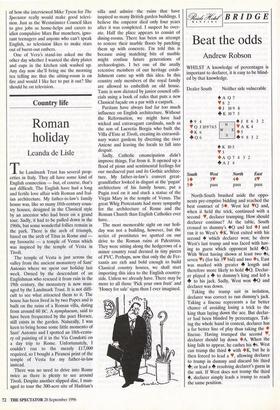BRIDGE
Beat the odds
Andrew Robson
WHILST A knowledge of percentages is important to declarer, it is easy to be blind- ed by that knowledge.
Dealer South Neither side vulnerable South West North East 1♦ 3, 4• 41► 5• pass pass pass
North-South brushed aside the oppo- nents pre-emptive bidding and reached the best contract of 5*. West led VQ and, when it held the trick, continued with a second V, declarer trumping. How should declarer continue? At the table, South crossed to dummy's 40 and led •J and ran it to West's •K. West exited with his second 4 which declarer won; he drew West's last trump and was faced with hav- ing to guess which opponent held +40. With West having shown at least two 4s, seven Vs (for his 3V bid) and two •s, East was marked with greater 4 length and therefore more likely to hold 40. Declar- er played a 4 to dummy's king and led a
• to his jack. Sadly, West won 40 and declarer was down.
Taking the trump suit in isolation, declarer was correct to run dummy's jack. Taking a finesse represents a far better chance of avoiding losing a trick to the king than laying down the ace. But declar- er had been blinded by percentages. Tak- ing the whole hand in context, declarer has a far better line of play than taking the • finesse. Having trumped the second V, declarer should lay down •A. When the king fails to appear, he cashes his 4s. West can trump the third 4 with •K, but he is then forced to lead a V, allowing declarer to trump in dummy and discard his third 4; or lead a 4 resolving declarer's guess in the suit. If West does not trump the third 4, declarer simply leads a trump to reach the same position.


















































































 Previous page
Previous page